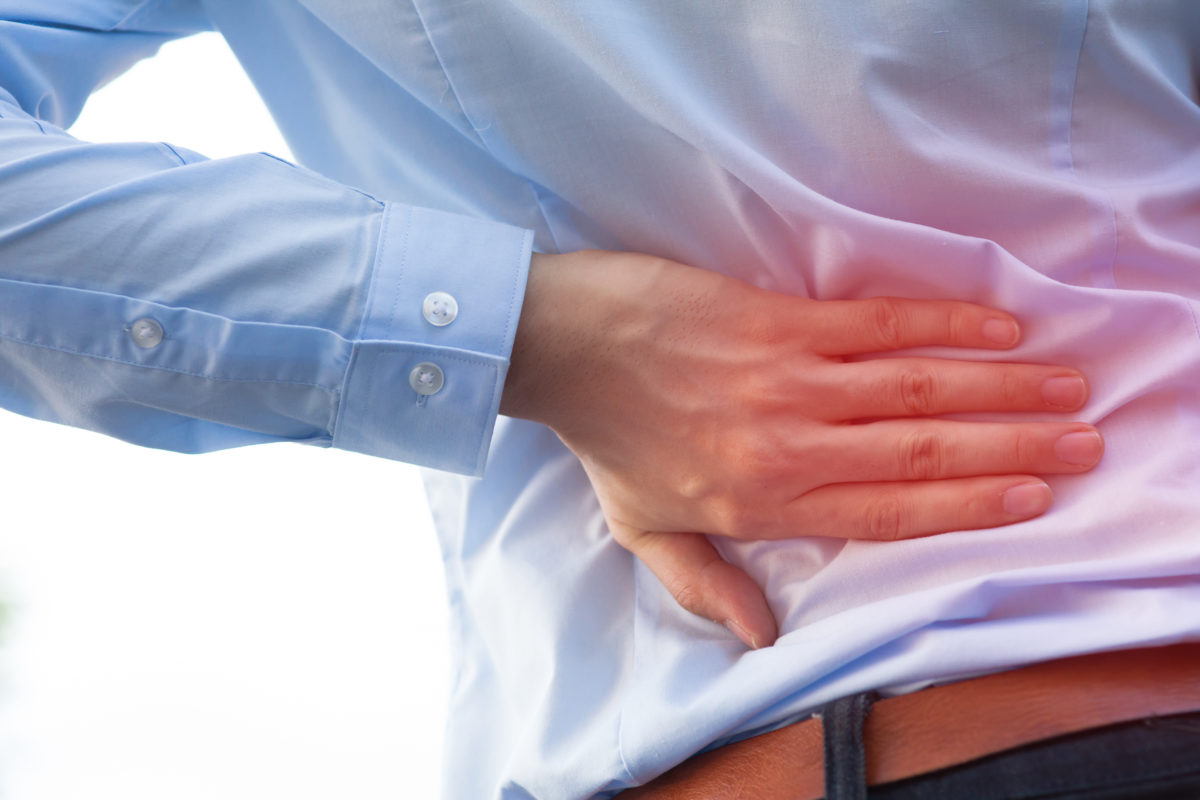
Anatomy & Physiology
Low back pain is one of the most prevalent complaints afflicting people in modern society.14 Knowing how a healthy spine works may help you understand how moving wisely can protect your back and keep it free from common back injuries. The vertebral column is a spiral spring in the form of the letters “S.” These curves develop to support functions that include holding up the trunk, serving as an anchor for the extremities, and keeping the head erect. The spine is made of 33 small bones, known as the vertebrae. The vertebrae protects many of the nerves in the body and acts as an anchor for many muscles that are attached to it at various segments of the back.
Causes and Types of Common Back Injuries
Although essential for the health of the back and the body, spinal curves are harmful when exaggerated.
- Lordosis is an abnormal concave curvature in the spine (swayback).
- Scoliosis is extreme lateral (to the side) curvature and it warps posture and upsets the body’s balance.
- Kyphosis (hunchback) is an extreme convex curvature of the thoracic vertebrae.
*These curves are often functional, meaning that they are postural in nature and will improve with growth. These types of conditions are often genetic. Signs of these curvature deformities can be detected through visual examination; an abnormal amount of curvature will get worse as the person bends forward to touch their toes. - Herniated Disc — This can occur, particularly in the lumbar area (low back). A common diagnostic sign is radiating pain while tilting the back. Treatment usually is conservative with rest, medication, bracing, and appropriate exercises, but some cases may require surgery. Symptoms of a herniated disc may begin suddenly or gradually. Sudden aching in the back or neck or being unable to straighten your back without extreme pain are signs of herniated disc problems.21
- General Low Back Pain — Sprains (injuries to a ligament) and strains (injuries to a muscle) are the most common causes of low back pain.21 Low back pain is most often linked to weak abdominal muscles, which provide most of the support for the lower back. Most low back pain, whether acute or chronic, usually can be treated without surgery.
Preventative Methods
Some simple methods for reducing or preventing common back injuries include:
- Exercising regularly to keep the muscles that support your back strong and flexible.
- Using the correct lifting and moving techniques. Get help if an object is too heavy.
- Stretching of the back muscles prior to getting up and before going to bed to reduce stiffness before and after activity.
- Relaxation techniques to loosen your back muscles.
- Maintaining proper posture to eliminate excessive stress on unwanted areas of the back.
- Weight management: excess weight, especially in the abdominal region pulls the lower spine forward, often resulting in the pinching of nerves between the vertebral disks. It is impossible to target weight loss to one area of the body, so overall weight management must be achieved.
- Performing core (abdominal) strength exercises including pelvic tilts and sit-ups twice daily to strengthen muscles that provide the most strength to the back.26
*If you are experiencing discomfort or recognize a sudden decrease in strength and/or stability, consult your doctor immediately about your symptoms and your possible need for physical therapy at a PT Northwest physical therapy location.
References
- Pfeiffer, R.P., & Mangus, B.C. (Ed.) (2008). Concepts of Athletic Training. (5th ed.). Sudbury, Massachusetts: Jones and Bartlett Publishers.
- Kirkaldy-Willis, W.H., & Burton, C.V. (Ed.). (1992). Managing Low Back Pain (3rd ed.). New York: Churchill Livingstone.
